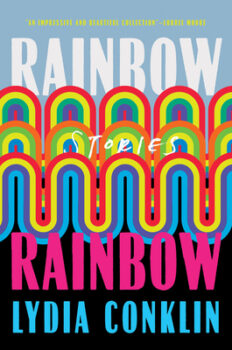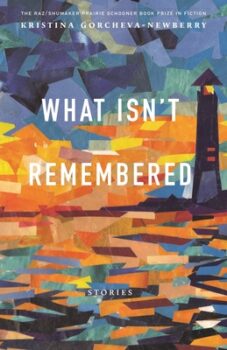 If you asked Wisconsin-based writer B.J. Hollars about his childhood and adolescence, he’d probably say it was a pretty common existence. “I hung out with the cool kids,” Hollars said. “But I was sort of like their documentarian. While the others were playing beer pong in the basement, I was the one taking notes about the story I would one day write about kids playing beer pong in a basement.”
If you asked Wisconsin-based writer B.J. Hollars about his childhood and adolescence, he’d probably say it was a pretty common existence. “I hung out with the cool kids,” Hollars said. “But I was sort of like their documentarian. While the others were playing beer pong in the basement, I was the one taking notes about the story I would one day write about kids playing beer pong in a basement.”
And it seems all this observing and note-taking has paid off. Hollars’s debut collection, Sightings, has recently been published by the Indiana University Press. The collection contains ten stories that run the gamut of emotion from laugh-out-loud hysterics to intense, lasting heartbreak. Many of the stories are built on surreal or absurd foundations; the title story, for example, chronicles Bigfoot’s accession through the ranks and social strata of a small-town high school basketball team. But the true magic of Hollars’s work lies not in the whimsical conceit of these stories, but in the way he manages to transcend the absurdity to deliver something true and heartfelt. You root for Bigfoot. You feel for him.
Hollars, a professor of creative writing at the University of Wisconsin-Eau Claire, is the author of two books of nonfiction, Thirteen Loops: Race, Violence, and the Last Lynching in America (2011) and Opening the Doors: The Desegregation of the University of Alabama and the Fight for Tuscaloosa (2013), both of which were published by the University of Alabama Press. He has also served as editor for three anthologies: You Must Be This Tall To Ride: Contemporary Writers Take You Inside the Story (Writers Digest Books, 2009); Monsters: A Collection of Literary Sightings (Pressgang, 2012); and, most recently, Blurring the Boundaries: Explorations to the Fringes of Nonfiction (University of Nebraska Press, 2013).
Recently, I was fortunate enough to snag a little time with him for a discussion of humor in fiction, growing up, and writing across many different genres.
Interview
Nick Ostdick: Ostensibly, Sightings is a collection of coming-of-age stories—an interesting, subversive grouping of coming-of-age stories, but coming-of-age stories, nonetheless. You’ve also edited an anthology of similar stories, You Must Be This Tall to Ride, so I have to ask: What is it about adolescence and growing-up that keeps calling to you as a subject matter?
B.J. Hollars: Maybe it’s my own arrested development. Up until a year ago, I felt like an overgrown kid. Then, when I actually had a kid, I started to feel even more like a kid. I sort of figured I’d start to feel grown up at last. I think I owe my obsession with coming-of-age stories to Ray Bradbury. He was so in love with all the wonders of the world that even as a very old man, he remembered what it felt like to be young.
I actually just got done teaching my “coming-of-age” fiction class, and I showed an episode of The Wonder Years called “The Journey.” Basically, it’s the melodramatic saga of a crew of fourteen-year-old boys trying to invade a slumber party. And while this story is as old as slumber parties, somehow the episode still manages to balance the heartbreak of nostalgia alongside the hilarity of growing older. That’s my favorite type of coming-of-age tale—one in which we laugh and cry at the same time.
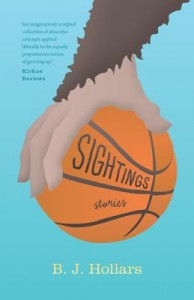 I think H.L. Mencken was quoted as saying “Genius is the ability to preserve one’s childhood.” I assume that’s something you’d subscribe to?
I think H.L. Mencken was quoted as saying “Genius is the ability to preserve one’s childhood.” I assume that’s something you’d subscribe to?
I do now. The idea of preserving the past has become terribly important to me. I’m absurdly sentimental. At the age of nine, when my family was preparing to move out of my childhood home, I took a video camera and dedicated a six-hour tape to recording every square inch of the place. That’s how crazy I am. But this preservation, too, relates back to Bradbury. His book Dandelion Wine changed me. In particular, I was attracted to the title’s metaphor. The notion of young boys gathering the dandelion’s in their front lawn and preserving them in empty ketchup jars…well…it’s a wonderful metaphor, isn’t it? The idea of preserving summer in a jar. Bradbury was just as sentimental as me. A few years back, I tracked down his childhood home and sent him an envelope full of grass from his front yard. And I’m pretty sure he loved it. Only guys like us could love grass clippings…
Many of these stories contain moments where I literally had to stop reading because I was laughing so hard, which is to say you employ humor in such an effective and satisfying way. When you sit down to draft a new story, is finding the humor in an idea a priority for you, or is it something that you come across as you write your way into a piece?
You know, I think I generally like to start with a premise that has the potential for humor, but from there, I sort of let the characters drive the story. It’s terrifying. I feel completely out of control. One minute I’m minding my own business in front of the computer and the next I’ve got a Sasquatch pounding down the Wallerton High School basketball court. Humor is so tricky. But for me, it’s always about finding the pathos within the punchline. I want to be funny, sure, but I also want to break the reader’s heart, at least a little.
I was curious about the idea of premise while reading many of these stories, and if you start with these surreal or absurdist platforms, or if you attempt to explore an emotion or idea and then layer these elements in?
I think I start with the premise and expand outward. That’s probably a terrible thing to admit. It’s sort of like saying, “No, there’s no master plan here, I just see what makes me giggle and go from there…” But in all honesty, I think that’s how it works for me. I believe every character—however goofy or unconventional—deserves to be rendered with honest emotions. And so, even when I’m dealing with out-of-work clowns, a Civil War re-enactor, or a boy who thinks his brother is a vacuum cleaner, I’m always secretly searching for an entry point into a deeper level of emotion. I don’t always find it (feel free to look under my bed for the hundreds of failed stories) but every once in a while I get lucky.
I don’t think that’s a terrible admission at all. It’s clear throughout the collection that the writer is having fun, and that the writer truly believes in what he is writing. I think that’s a pretty important and rare quality.
I always tell my students that if they’re not enjoying themselves, then their story may be going awry. This isn’t to say that writing is always a “fun” process for me. Most days it’s not. It’s laborious. But it’s the kind of labor that makes you feel good when it’s over. It’s like a good workout—you’ll feel it for days. I certainly try to create an environment in which playfulness in encouraged. I’ve found that workshops are often cursed when the writers take themselves too seriously. It’s a place to share. It’s a place to try, fail, and then fail a little less the next time around.
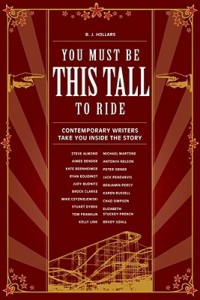 You said something a moment ago that I find quite profound: about finding the pathos with a punchline. I do think these stories contain real emotional punch, and I think a big part of that is a result of how the adolescent characters aren’t reacting so much to actions of the adults in their lives, but moreover the actions of other adolescent characters who are representations of “the other”—a family of raucous Native Americans, Bigfoot on a small-town basketball team, etc. Is this distinction something you were attempting to make clear throughout the book?
You said something a moment ago that I find quite profound: about finding the pathos with a punchline. I do think these stories contain real emotional punch, and I think a big part of that is a result of how the adolescent characters aren’t reacting so much to actions of the adults in their lives, but moreover the actions of other adolescent characters who are representations of “the other”—a family of raucous Native Americans, Bigfoot on a small-town basketball team, etc. Is this distinction something you were attempting to make clear throughout the book?
I wish I could take credit for consciously trying to make that cohesiveness in my own head, but alas, I must give my self-conscious credit for that. Of course, I am very much interested in “the other.” I’ve edited an anthology entitled Monsters and written a series of essays for a chapbook entitled In Defense of Monsters. I suppose I’ve always been fascinated by things that can’t be proven, the mysteries of the universe, so to speak. Adolescence is one of those mysteries. One can never understand why the pimple would dare pop up on prom night, but it always does, doesn’t it? That’s how it is when you’re coming-of-age; the world spares no one. It’s the one thing that seems to transcend all the “otherness”—the promise of growing up awkwardly.
We touched on this a moment or two ago, but you’re a real Jack of All Trades, in that you’ve written and published a lot of writing external to fiction: a chapbook of essays, two academic books of non-fiction on race, and a number of articles and interviews. And in adding up all these different modes, I’m wondering how you feel this influences the fiction?
That’s a great question. And you’re right, I’m sort of all over the place. Many of these stories were written around the time when I was also writing a nonfiction book about lynching. The material for my nonfiction book was so dark, so troubling, that I think many of these stories were written as a kind of release. At that time, I really needed to find some good in the world. By day I’d read redacted FBI files about a race-related murder, and by night, I’d try to find a reason to get myself to smile again.
I also often find myself changing forms. In fact, sometimes I even try dabbling in both before making a choice. For instance, in “Line of Scrimmage” I mention a father-son breakfast shared between a football coach and his middle school football player. That was very much based off a true event, but after I struggled to tell it truthfully, I inserted it into the story. I think it worked better there. At the very least it allowed me to take off the nonfiction handcuffs and try to find a little humor in the moment.
So it’s safe to say there’s a good amount of cross-pollination? The nonfiction can feed the fiction and vice-versa?
I think so. But these days I find myself growing a little more comfortable working within the essay form. Of course, I’m always troubled by the usual problems of nonfiction—in particular, trying to negotiate between memory and reality—but over the past year or so I’ve come to a place where I’m beginning to trust myself behind the controls. But fiction liberates me. When writing fiction, I’m no longer beholden to “Truth” with a capital T. Instead, I can try to get at it from another angle.
Given all these angles of entry into an idea, can I assume you’re not a terribly precious writer when it comes drafting? Are you content to write a lot and toss a lot at same time?
Oh, I wouldn’t say I’m content with it, but I’m starting to understand that’s part of the process. I have a sticky note above my computer that reads, “Cut off the arm to save the body.” It reminds me that I’ll need to kill a lot of darlings before I can compress a piece into its proper length. In fact, two of the ten stories in my collection (“Schooners” and “Westward Expansion”) actually have full novel versions as well. They’re not good novels, mind you, but at one stage I had a few hundred pages dedicated to those characters. And now, you only see them for a few pages. But it’s nice, at least for me, to know they lived a little beyond the pages of their cameos in the collection.
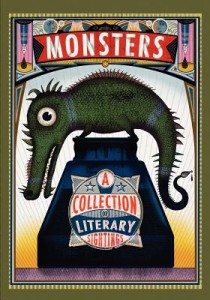 Talk a little more about these cameos. How did you find working with these characters in novel-form versus short story-form? Did this lead to new opportunities in terms of plot or character, or did it just complicate things?
Talk a little more about these cameos. How did you find working with these characters in novel-form versus short story-form? Did this lead to new opportunities in terms of plot or character, or did it just complicate things?
Well, I’d say it was a complicated relationship. In both instances, the stories came first. Then, I got the bright idea to keep writing, and once we reached the novel phase, I realized these characters’ lives were better lived in the short story form. As I revised the stories, I’m sure character details from the novel versions eventually found their way into the rewrite, but ultimately, there’s a lot more to these characters the short story readers will never know. I hope readers will get some sense of their history, but the details are pretty much lost. And that’s okay. Sometimes you’ve got to write a failed novel or two in order to understand the characters fully, even if this understanding is only for you. At least that’s what I tell myself when I need to feel like the novels weren’t complete failures.
Talk to me a little about putting together a debut collection and the process of publishing it.
It took years. I had fifteen or so stories I thought I liked, but apparently, they didn’t all like each other. And so, after years of fighting with them, I narrowed it down to ten stories. It’s a relatively short collection, but I’m proud of the result. I was never sure which was my title story, but Sightings seemed to be the best thematic fit given the collection’s many oddball inhabitants. I turned it into the press, my peer reviewers gave me some incredible feedback, and I went back to work retooling the stories that demanded further attention. It was sort of funny because I assumed the stories were “done” simply because they’d been previously published. But they weren’t. The peer reviewers helped me understand that a stamp of approval by one literary magazine doesn’t guarantee perfection. Not by a long shot. And so, I reacquainted myself with the characters, and it was so wonderful to have the chance to give them a little more life, to say hello once more before waving goodbye from afar.
I just realized the word “learning” has come up quite a lot during this interview, and based on what you just said, it seems like you had a “learn by doing” experience with this book.
Maybe I actually learned how not to put a collection together. But ultimately, via the long route, I finished with a product I’m wholly proud of. But you’re right; I’m pretty good at chalking up everything as a learning experience.
In fact, as an undergraduate, I tried something I called my “Story-A-Experiment.” Basically, for six months or so I wrote a 2,000 word story every single day. It was hell. And the stories were God-awful. But I learned how to sit my butt in a seat and write even when I didn’t feel like it. So that, too, was a learning experience, though perhaps I didn’t truly feel the reward until an hour or so ago, when I came home to find my first copy of Sightings waiting for me. It feels good. It makes all those hours spent trapped in the college computer lab somehow worth it.
 Now that the book is out, do you have anything on the horizon?
Now that the book is out, do you have anything on the horizon?
Well, I’m currently at work on a hybrid text entitled, Dispatches from the Drownings. In many ways, it’s sort of an homage to Michael Lesy’s cult classic Wisconsin Death Trip. Basically, the book will consists of 100 “dispatches” about drownings that occurred around the turn of the 19th century in or around my home of Eau Claire, Wisconsin. Alongside these dispatches are photographs of people from the same geography and era. But here’s the thing: Of the 100 dispatches, only seventy-five are true. The other twenty-five are completely fabricated. Yet when you see the photos alongside the dispatches, it’s hard to imagine any of them being fictions. I’m the only one who knows what’s what, and throughout the revision process, even I have begun to lose track of what’s true. And I suppose that’s the point. I’m trying to put pressure on the factuality of facts. I’m frustrated by the limits of trying to know an experience fully, and recounting drowning stories long removed form the present is my way of trying to work through these challenges of the nonfiction genre.
So it seems as if the fictive and non-fictive impulses are coming together, eh?
Well, yes, but I wouldn’t call it a perfect marriage. They’ve been momentarily forced to spend some quality time with each other.
Links & Resources
- For news and events, visit B.J. Hollars’s website.
- Read the author’s essay in Brevity on the 1981 lynching of Michael Donald.
- Read his article about fear, parenting, and lake monsters on The Rumpus.
- You can also read “Fifty Ways of Looking at Tornadoes” in Quarterly West.


